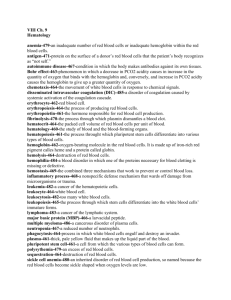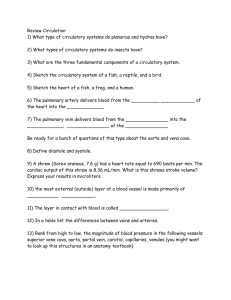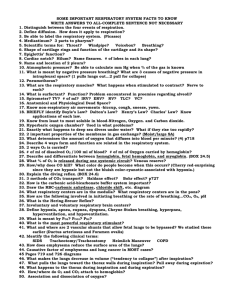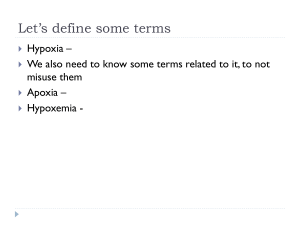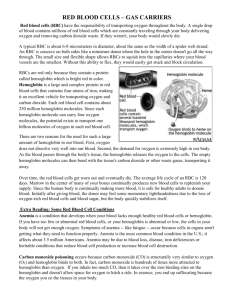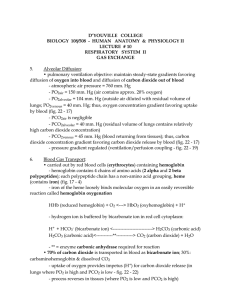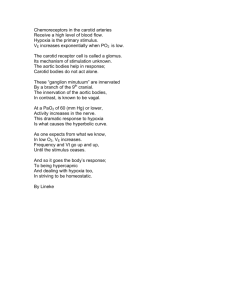study guide
advertisement
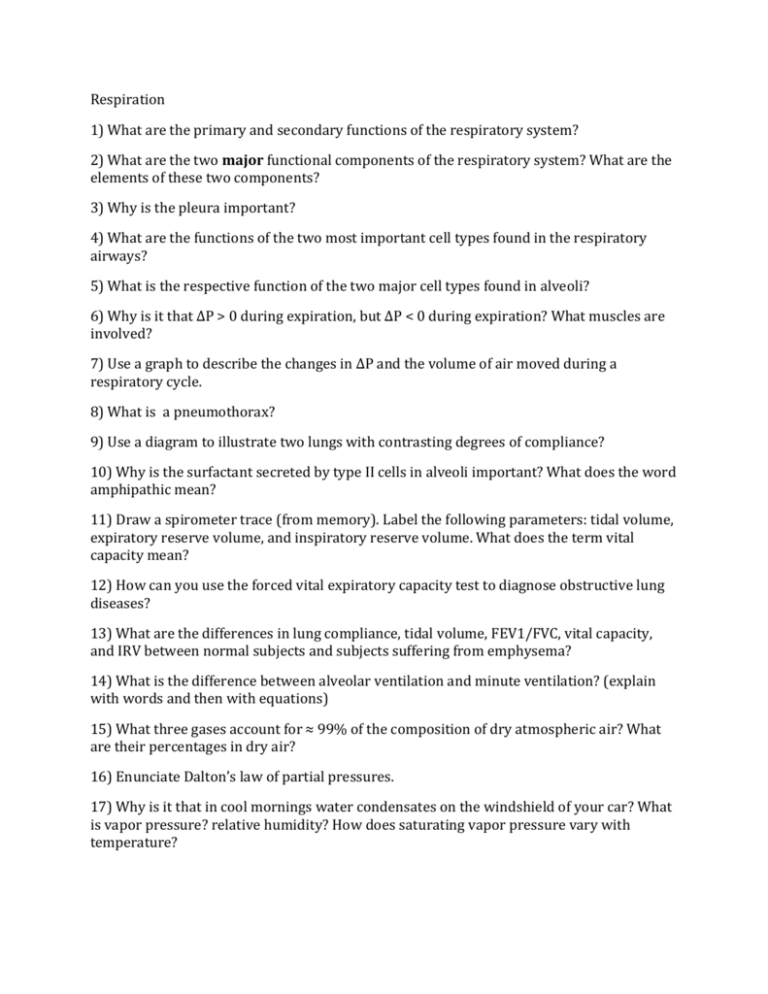
Respiration 1) What are the primary and secondary functions of the respiratory system? 2) What are the two major functional components of the respiratory system? What are the elements of these two components? 3) Why is the pleura important? 4) What are the functions of the two most important cell types found in the respiratory airways? 5) What is the respective function of the two major cell types found in alveoli? 6) Why is it that ∆P > 0 during expiration, but ∆P < 0 during expiration? What muscles are involved? 7) Use a graph to describe the changes in ∆P and the volume of air moved during a respiratory cycle. 8) What is a pneumothorax? 9) Use a diagram to illustrate two lungs with contrasting degrees of compliance? 10) Why is the surfactant secreted by type II cells in alveoli important? What does the word amphipathic mean? 11) Draw a spirometer trace (from memory). Label the following parameters: tidal volume, expiratory reserve volume, and inspiratory reserve volume. What does the term vital capacity mean? 12) How can you use the forced vital expiratory capacity test to diagnose obstructive lung diseases? 13) What are the differences in lung compliance, tidal volume, FEV1/FVC, vital capacity, and IRV between normal subjects and subjects suffering from emphysema? 14) What is the difference between alveolar ventilation and minute ventilation? (explain with words and then with equations) 15) What three gases account for ≈ 99% of the composition of dry atmospheric air? What are their percentages in dry air? 16) Enunciate Dalton’s law of partial pressures. 17) Why is it that in cool mornings water condensates on the windshield of your car? What is vapor pressure? relative humidity? How does saturating vapor pressure vary with temperature? 18) State Henry’s law with both words and an equation. What are the factors that influence the solubility coefficient of gases? How does the solubility of oxygen and carbon dioxide in water differ? 19) Describe the equation that relates metabolic rate, cardiac output, and the concentration of oxygen in arterial and venous blood. 20) Why do we need hemoglobin? How much oxygen can blood carry in simple solution (use an equation to give a quantitative answer). 21) Describe the molecular structure of hemoglobin (the key words are tetramer, heme, and iron). 22) Write down the equation that relates the concentration of oxygen bound to hemoglobin with hemoglobin’s oxygen carrying capacity, hemoglobin concentration in blood, and hemoglobin’s saturation (as a function of oxygen’s partial pressure). -Which of the parameters in this equation are affected by histotoxic hypoxia? -Which of the parameters in this equation is affected by anemia? -Which of the parameters in this equation is affected by anoxic hypoxia resulting from climbing at high elevation? 23) Use a diagram to illustrate the relationship between hemoglobin’s percent saturation and the partial pressure of oxygen in blood. 24) What is histotoxic hypoxia? 25) How do red blood cells become deformed and “sickle-shaped” in subjects with sickle cell anemia? Why is sickle cell anemia relatively common among African Americans? 26) What are the effects of pH, PCO2, temperature, and 2, 3-DPG on the oxygen-hemoglobin dissociation curve? 27) In what chemical form is CO2 transported in blood? What is the proportion of each of these chemical forms in blood? Why is the enzyme carbonic anhydrase so important in this process? 28) How (and where in the cervical chord) is rhythmic breathing regulated? 29) Use diagrams/graphs to compare the effects of arterial PCO2 and PO2 on minute ventilation. 30) Where are the chemoreceptors that sense changes in arterial PCO2 and PO2? Do the central chemoreceptors that detect changes in PCO2, sense CO2?
